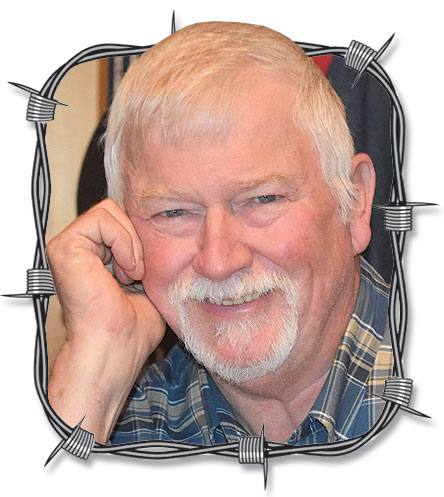Spring meant bucket calves when I was a boy.
Most folks I know call ‘em “bottle calves” today, because they use mammoth versions of baby bottles. But, when I was a boy we used a galvanized metal bucket with a big rubber nipple near the base and a hook on the rim to hang the whole affair on a board fence (never a really good idea).
I guess some folks still use calf buckets, and maybe bottles were around when I was a boy, but it’s the buckets and pens of slobbery Jersey calves I remember. I never in my life held a bottle, but I sure did my best to keep a bucket right side up.
Before they became “bucket calves,” those little brown Jerseys were fragile, wet bundles of muscle, hide, hair and bones struggling to stand on wobbly legs on a bed of bluegrass and violets secreted in a stand of persimmon trees.
In all my younger years I don’t recall a single instance of helping a Jersey momma have her calf. Calving troubles were virtually non-existent. I didn’t have more than textbook learning on pulling calves until years later when Dad had switched to beef. I was years gone from home by then, though still as close as the telephone, and fully grown before I experienced losing a calf at birth. Scours claimed more calves than did dystocia.
With just a small herd of Jersey milk cows in the barn twice a day, calves seldom came as a surprise. Dad taught me early how to “bump” a calf as a pregnancy check, as well as the physical signs to look for as a cow was soon to freshen.
When a cow or heifer didn’t come to the barn with the rest of the herd, we reckoned we had a calf on the ground somewhere – somewhere on 40 acres. As often as not I or my brothers would discover a new calf when bringing up the cows, but sometimes we had to scout the woods, cedar glades and persimmon groves. That wasn’t too hard in daylight, but in our first years – before we had cleared much brush – locating that cow and calf by kerosene lantern light could make for a long evening.
Most times we carried the calf to the barn soon after Momma had it clean and dry, and we always checked her udder to see it had nursed. Now, a little Jersey calf is no bigger than a full-grown hound, and for a strapping farm boy not much of a chore to heft like cordwood and lug to the barn with Momma following close behind.
I suppose everyone has a little different, but similar, system for handling calves. Early on junior got to nurse all he or she could, and then we’d strip out Mom. After a few days, when the colostrum had cleared, the calf just got what it needed and the rest went into the milk can. That’s when the baby calf became a bucket calf.
I don’t know how Dad determined just how much a calf needed. That wasn’t my job. Mine was to carry that bucket of fresh milk out to the pen and feed the calves. They always got real milk; Dad didn’t believe in milk replacer.
As any dairy kid knows, God never made a creature more spoiled or ornery than a bucket calf. Calves have but one purpose in life — to suck a teat or nipple as vigorously as possible as long as they can get a drop of milk. They don’t even have to start with milk. A finger or whole hand will get things started.
Once a calf figures out the routine, it doesn’t take long to drain a bucket, but if you’ve never done more than give a bottle to your little brother, sister, nephew or niece, you might not be prepared for the impatient lunging of a calf. Like the sign at theme park rides warns, “You will get wet.” And don’t be deceived by the handy hook on the back of the bucket. Once that calf grabs hold, you better hang on, too.
At least, that’s how I remember it when I was a boy. As long as we milked cows, we had bucket calves to raise.
Of course, spring not only meant calves, it meant more cows to milk, and when I was big enough to slide my own milk stool under a cow’s business end, bucket calves became a little brother’s chore.
But, as long as Dad had both milk cows and boys, spring meant bucket calves for one or all of us.
A former feature writer for Ozarks Farm and Neighbor, Jim Hamilton is a retired newspaper editor/publisher. Hamilton was reared on a small dairy farm in Dallas County, Mo. Contact Jim at [email protected].






